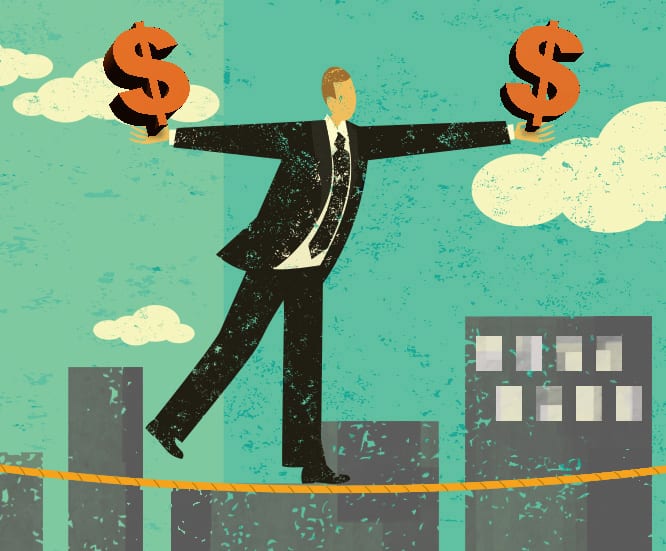Even the most seasoned investors are prone to their influence.
Investors are routinely warned about allowing their emotions to influence their decisions. They are less routinely cautioned about letting their preconceptions and biases color their financial choices.
In a battle between the facts & our preconceptions, our preconceptions may win. If we acknowledge this tendency, we may be able to avoid some unexamined choices when it comes to personal finance. So it may actually “pay” us to recognize our biases as we invest. Here are some common examples of bias creeping into our financial lives.
Valuing outcomes of investment decisions more than the quality of those decisions. An investor thinks, “I got a great return off of that decision” instead of thinking, “that was a good decision because ______.”
How many investment decisions do we make that have a predictable outcome? Hardly any. In retrospect, it is all too easy to prize the gain from a decision over the wisdom of the decision, and to therefore believe that the decisions with the best outcomes were in fact the best decisions (not necessarily true).
Valuing facts we “know” & “see” more than “abstract” facts. Information that seems abstract may seem less valid or valuable than information that relates to personal experience. This is true when we consider different types of investments, the state of the markets, and the health of the economy.
On Main Street, we find a classic example in Gallup’s U.S. Economic Confidence Index. In the August edition of this monthly poll of more than 3,500 U.S. adults, 55% of respondents said the American economy is “getting worse” instead of better. In fact, more Americans have told Gallup that the economy is getting worse rather than better since March.1
This flies in the face of the declining jobless rate, the strong hiring of 2015, the comeback of the housing market, and key surveys showing years of consistent monthly growth in the manufacturing and service sectors – but in all probability, these poll respondents are not looking at economic indicators when they make such a judgment. Their neighbor was laid off, or there was a story on the nightly news about a new homeless camp growing in size. These are facts they can “see” – and therefore, in their minds the economy is getting worse.1
Valuing the latest information most. In the investment world, the latest news is almost always more valuable than old news… but when the latest news is consistently good (or consistently bad), memories of previous market climate(s) may become too distant. If we are not careful, our minds may subconsciously dismiss the eventual emergence of the next bear (or bull) market.
Being overconfident. The more experienced we are at investing, the more confidence we have about our investment choices. When the market is going up and a clear majority of our investment choices work out well, this reinforces our confidence, sometimes to a point where we may start to feel we can do little wrong thanks to the state of the market, our investing acumen or both. This can be dangerous.
The herd mentality. You know how this goes: if everyone is doing something, they must be doing it for sound and logical reasons. If most investors are getting out of equities, or getting back into equities, it follows that you should follow them. The herd mentality is what leads many investors to buy high (and sell low). It can also promote panic selling. Above all, it encourages market timing – and when investors try to time the market, they frequently realize subpar returns.
Did you know that American retail investors held equity shares for an average of 6.3 years during the 1950s? That duration kept shortening until the 2000s, when it was reduced to roughly six months – which is still the average today. We have exponentially greater media coverage of Wall Street today than we had in the 1950s, and that may be the big factor in that difference – but still, you have to wonder how much better the typical investor’s return would be if he or she had the patience of the investors of the past.2
Extreme aversion to risk. Some investors want zero risk, or close. What price do they pay in pursuit of that goal? The opportunity cost may be sizable. In building an extremely risk-averse portfolio, they thwart their potential for significant gains when the equity markets advance.
Everyone loves to be certain about things. Sometimes, however, we need to ask ourselves what that certainty is based on, and what it reflects about ourselves. Examining our preconceptions may help us as we invest.
This material was prepared by MarketingPro, Inc., and does not necessarily represent the views of the presenting party, nor their affiliates. This information has been derived from sources believed to be accurate. Please note – investing involves risk, and past performance is no guarantee of future results. The publisher is not engaged in rendering legal, accounting or other professional services. If assistance is needed, the reader is advised to engage the services of a competent professional. This information should not be construed as investment, tax or legal advice and may not be relied on for the purpose of avoiding any Federal tax penalty. This is neither a solicitation nor recommendation to purchase or sell any investment or insurance product or service, and should not be relied upon as such. All indices are unmanaged and are not illustrative of any particular investment.
Citations.
1 – gallup.com/poll/184640/economic-confidence-index-stable.aspx [/fusion_builder_column][fusion_builder_column type=”1_1″ background_position=”left top” background_color=”” border_size=”” border_color=”” border_style=”solid” spacing=”yes” background_image=”” background_repeat=”no-repeat” padding=”” margin_top=”0px” margin_bottom=”0px” class=”” id=”” animation_type=”” animation_speed=”0.3″ animation_direction=”left” hide_on_mobile=”no” center_content=”no” min_height=”none”][8/18/15]
2 – nytimes.com/2014/01/13/your-money/stocks-and-bonds/why-we-buy-in-a-marked-up-market.html [1/13/14]

